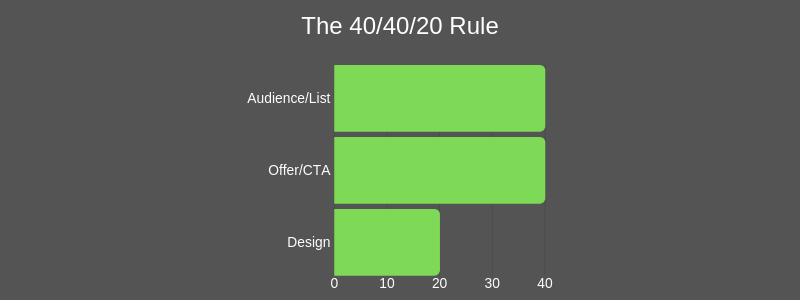
With marketers increasingly exploring direct mail as a method to augment their email and digital marketing channels, the question “What is direct marketing?” is being asked more frequently.
Often, direct marketing and direct mail are phrases that are used interchangeably, and it is easy to see how they can be confused. That being said, it is important to understand that they are related, but different.
Direct mail is a channel that applies direct marketing principles, but it is not the only channel. In fact, recent studies have shown that direct mail works best in conjunction with other channels. Direct marketing, on the other hand, is a form of marketing that can be applied to direct mail, email, digital and many forms of advertising and promotion.
WHAT IS DIRECT MARKETING?
- A type of marketing that targets specific prospects and customers
- It includes segmentation of an audience based on geography, demographics or behavior
- The creative is often personalized at the segment or individual level for better response
- It involves a specific “Call To Action” such as a request to click a website link or call a phone number
- Success is measured by the percentage of the audience that responds to the Call To Action
When done well, Direct Marketing gathers relevant customer data to improve offers, calls to action, and messaging. Direct Marketing efforts are usually measured against metrics such as customer engagement and loyalty, as well as marketing and sales performance.
WHAT IS THE DIFFERENCE BETWEEN DIRECT MARKETING AND GENERAL ADVERTISING?
Other forms of advertising are focused on brand building and raising awareness, rather than driving customers to take a specific action. For example, a Super Bowl TV spot with medieval characters repeating the phrase “Dilly Dilly” is memorable, but not focused on a targeted audience, doesn’t have a specific call to action, nor is the response to the ad easily measured:
Contrast this with a direct mail piece from a hot tub dealer with a strong offer (trade in program savings), a sense of urgency (limited time offer) and with a specific call to action (phone number to call and email address). While not a fun and silly as “Dilly Dilly”, when you read this, you know exactly what to do:

It also is sent only to existing hot tub owners in specific towns, rather than broadcast to the entire world. And the response will be easily measured, by counting the respondents that sign up for the Cash For Clunkers program.
WHAT ARE THE BENEFITS OF DIRECT MARKETING?

- It is more cost effective – by targeting likely buyers only
- Success is more easily measured
- Testing of messages, calls to action and other creative to different segments is easy
- Multi-channel campaigns are easier to deploy with CRM/Marketing Automation
- Loyalty campaigns to existing clients are more easily deployed
Any marketing campaign provides an opportunity to tell a story and develop company pipeline. Direct Marketing is focused on generating leads, pipeline and sales more effectively and more efficiently.
Today, marketers are focused on delivering measurable results. Gone are the days where world famous marketers say they know 50% of their marketing budget provides a return, they just don’t know what 50%!
Get The Report: How direct marketers achieve 600% better returns!
The need for direct marketing has increased with the abundance of today’s marketing channels. In the above research report, the author quotes “Today’s marketer has more options to reach her target audience than ever before. Yet it has never been more difficult to earn the attention and engagement of that user.”
Multi-channel direct marketing campaigns are very effective at earning attention and engagement.
WHAT ARE THE TYPES OF DIRECT MARKETING CHANNELS?
Direct Marketing campaigns include at least one, but often more than one channel. Each deployed channel should be focused on the direct marketing fundamentals described earlier. Common direct marketing channels include:
- Direct mail marketing (batch or list based)
- Triggered direct mail
- Email marketing
- Targeted digital display ads
- Social media ads
- Promoted posts
- Personalized ads on TV (personalized based on the cable company knowing who you are and what you like)
Multi-channel marketing campaigns now deploy several channels, all centrally coordinated. Companies are able to measure the effectiveness and improve their direct-marketing campaigns by tracking responses and integrating this data with the Customer Relationship Management (CRM) and Marketing Automation (e.g. HubSpot, Marketo) systems.
DIRECT MARKETING BEST PRACTICES

Remember the 40/40/20 Rule. 40% of direct marketing success will come from the list (targeting the right prospects at the right time); 40% from the offer (compelling and relevant offers are the best); and 20% from the creative (the copy and artwork must be attention-getting and motivating).
Because direct marketing can be tactile, it’s harder to ignore, experiment with a variety of sizes and formats that can be used to attract attention. Don’t forget to deploy the 40/40/20 rule across every channel you use in a direct marketing campaign, so that your target audience is getting consistent calls to action.
WHAT IS DIRECT MARKETING?
It’s smart marketing that every organization should be using.
With new tools and technology, direct marketing can be easily integrated into your overall marketing tech stack. When marketers need to quickly generate leads, it is a discipline that delivers over and over again.
Get The Report: How direct marketers achieve 600% better returns!
About the Author

Dennis Kelly
Dennis Kelly is CEO and co-founder of Postalytics, the leading direct mail automation platform for marketers to build, deploy and manage direct mail marketing campaigns. Postalytics is Dennis’ 6th startup. He has been involved in starting and growing early-stage technology ventures for over 30 years and has held senior management roles at a diverse set of large technology firms including Computer Associates, Palm Inc. and Achieve Healthcare Information Systems.
